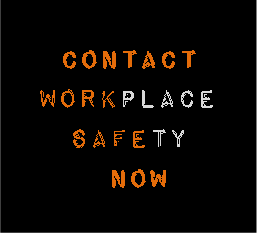Why should your company think about violence in the workplace?
Annually over 500,000 cases of workplace violence occurred in the United States. This is actually down from the 1990-2000 time frames. What can you do?
You can have a planned response, a program or procedure in place that provides an answer to the question, “What am I supposed to do when this happens?”
What does your company need to do to be aware of to help prevent or react to workplace violence? Each company is different, but for you to help secure workplace safety in your company, you have to evaluate your risk, determine potential solutions, and educate your employees to be able to respond to potential or actual violent situations.
Types of Workplace Violence
1. Personal: A person who does not work at your job site, but has a personal relationship with one of your employees, comes to the workplace to target them for verbal, or physical confrontation, it may refer to domestic violence, and it may refer to other scenarios.
2. Customers who came to your establishment for goods or services who become upset while at your location, and focus that anger upon other patrons, or other employees.
3. Criminals who came to your establishment with the intent to perform criminal actions. This may refer to attempted theft situations, robbery situations, dine and dash situations, and shoplifting as well as other possibilities.
4. Employees or former employees who may act with violence toward coworkers, supervisors, managers and owners.
How do you break down and evaluate your potential risks.
Management program or plan in place? That is probably what led you here. Does management have a plan for this potential hazard, and has it implemented training to help reduce the risk or let people know what to do if there is an event.
Environmental hazards, do you have multiple entrances and exits that are not controlled? If they are not required to allow customers in is it possible to put locks on them so that they only open from the inside? Do you have clear paths for people to get out of an area if necessary, and do they know where to go? These are things that you might already have in place for fire or other emergency drills.
Employees, while employees are part of the potential risk they are also instrumental in avoiding issues. Teaching your employees how to respond in a threatening situation allows them to act with confidence when presented with an unpleasant situation. De-escalation, and non-confrontation need to be discussed, and then of course rapid reporting to management. Who should call 911? And when? If shots are fired for example, someone should call immediately, if the situation is just unpleasant, calling the police may not be the first thing you want to do.
With all programs, there are as many ways to handle this as there are companies, but your company should develop an answer for your employees to help prepare them for possible scenarios.
Most companies have workers, and coworkers, learning to spot much stressed employees prior to them reaching their breaking point is a good start. Some incidents may be able to be avoided by talking with and listening to your employees. If it comes to the attention of someone at work that a coworker is terribly stressed or upset, then it is appropriate to address it in a professional manner to express concern, and to help the employee find a coping mechanism or direct them to other professional help if need be.
Having a plan for what to do if a person walks in off the street and becomes violent will allow you to develop a protocol that may prevent or deter violence in your workplace. Dealing with them directly, getting the manager involved, and knowing when to call the police are things you want to develop protocols for.





